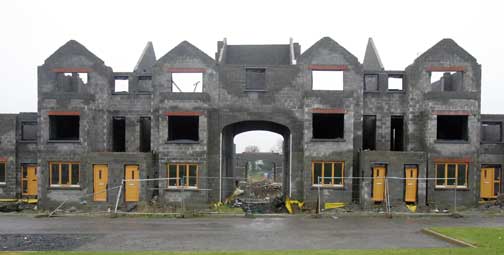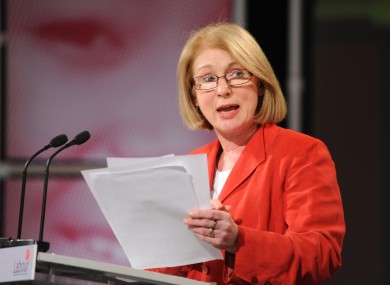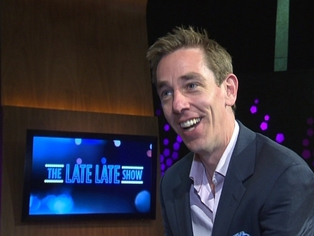Irish Cabinet at odds over plans to deduct property tax from the dole


Ireland’s Ministers are at loggerheads over proposals to make social welfare recipients liable for the property tax – and take it straight from payments like the dole.
And some cabinet members are now fearful they will be bounced by Finance Minister Michael Noonan into tax proposals without debate on Budget day.
Social Protection Minister Joan Burton is insisting “under no circumstances” will people on welfare have to give the property tax straight from their payments.
Sources also say she does “not accept” the concept that people on welfare will have to pay the tax. The Irish Independent understands deducting the tax directly from welfare payments is one of the recommendations in the Thornhill Report, given to the Government on property tax.
“No, that is not accepted,” a source close to Ms Burton said.
“It’s a no-go as far as she’s concerned.”
Sources also warned that such a proposal would open Labour up to further attacks on its left at a time when the party is steadily losing support. In particular, it is feared it could lead to floods of damaging court challenges to the tax.
Ms Burton first detailed her concerns in a letter to Environment Minister Phil Hogan when he was considering the Thornhill Report in the summer, and she said taking the tax from welfare payments could lead to “a farcical system”.
“She has repeated these concerns but they appear to have fallen on deaf ears,” a source added.
Mr Hogan has refused to rule out people on welfare paying the tax, while Transport Minister Leo Varadkar and junior finance minister Brian Hayes said everyone must make some contribution to the property tax.
Hardship
Mr Noonan is designing the tax, which will be one of the centrepieces of next week’s Budget. Welfare recipients were obliged to pay the €100 household charge, but those in local authority housing were not.
However, the property tax will be much higher, and could cause further financial hardship and “drive people back to the community welfare officer”, it is claimed.
In her letter to Mr Hogan, seen by the Irish Independent, Ms Burton said it could lead to “a farcical system whereby the payment of this range of system charges would simply result in additional demands on the funding of the social welfare system”.
This would cause “a circular movement of funds around the Exchequer and the multiplication of administrative overheads and information maintenance requirements, with all resulting costs arising in both the programme and administrative budgets of the social welfare system”.
Deducting from source “cannot be implemented” and is “not feasible” from a policy or logistical point of view, she added. However, it is now said to be “doable but tricky”.
Public Spending Minister Brendan Howlin is to bring proposals on €2.1bn of spending cuts to Cabinet today, but it is unclear if Mr Noonan is bringing his tax plans.
This is now causing serious worry around Cabinet, and comes after grumblings about how the Budget has been kept “drum tight” by the Economic Management Council, which comprises Mr Howlin, Mr Noonan, Tanaiste Eamon Gilmore and Taoiseach Enda Kenny.
A source said there were concerns “we will have no opportunity to discuss it” and that “it will not have been politically proofed by Cabinet”.
Rank-and-file TDs are also concerned the secrecy surrounding the Budget will cause major trouble after the €3.5bn cuts-and-taxes plan has been announced on December 5.
Meanwhile, Joan Burton has promised Labour backbenchers that her social welfare cutbacks will be more targeted on a small number of schemes.
Last year, she had to implement more than 25 separate social welfare cutbacks, which included cuts to child-benefit payments, disability payments, lone-parent schemes and community employment schemes.
She told Labour backbenchers in a private briefing that the current €540m of social-welfare cutbacks in next week’s Budget would be focused on a smaller number of schemes – with sources putting it at between 10 and 20 schemes.
But Labour backbenchers are still bracing themselves for the impact of the social welfare cutbacks – which will be higher this year at €540m compared to €475m last year.
Ms Burton repeated her public pledge that there would be no cuts to core social rates – which are defined as weekly payments such as job-seekers and the state pension but excludes child benefit.
Labour sources said child benefit is not going to be means tested or taxed, but they are still expecting cuts in payment rates.
She also promised – as reported earlier this week in the Irish Independent – that the number of places on the Tus and Rural Social Schemes would be expanded to cater for more unemployed people.
The number of Irish ghost estates now down to 1170


Nearly two-thirds of Ireland’s ghost estates are in dire need of development. Almost two-thirds of the country’s 1,770 ghost estates are in a seriously problematic condition, it has now been revealed.
New data showed the number of unfinished developments has fallen in recent years, but 1,100 estates remain in dire need of development.
Just a fraction of those are expected to be bulldozed despite lacking basic services like roads, street lights and sewage treatment systems.
Jan O’Sullivan, Minister for Housing and Planning, said the latest national housing development survey revealed steady, quantifiable progress in tackling unfinished housing developments but she was “still keenly aware that hundreds of families are still enduring the stress and strain of living on an unfinished development.”
An inspection off 185,665 houses and apartments in 2,973 developments found: 1,770 estates were unfinished, down 37% since 2010 when the first survey was carried out; 1,100 of these were in a seriously problematic condition; 6,154 properties have been completed and occupied within the year;16,881 finished homes were still vacant;1,200 developments previously included in the survey will be removed because they are either substantially complete or development never commenced.
Elsewhere it showed the county of Leitrim had the worst vacancy rate, with 35 empty units per 1,000 households, followed by Longford with 30, Cavan with 26, Sligo with 19 and Roscommon with 17, compared with just two in Waterford and Limerick cities.
Ms O’Sullivan said the focus of the Government’s actions will shift to resolving the most problematic developments, adding that recent experience showed how a realistic approach to estate completion involving all stakeholders can deliver results.
“However it must also be recognised that some of these developments are commercially unviable due to location, demand and build quality,” she said.
“The most prudent course of action in relation to these developments from a public safety, planning and commercial perspective is to seek the agreement of owners/funders to clear the site and return it to some beneficial use.”
Ms O’Sullivan said her department hopes to have a plan in place to deal with the issue by next summer.
Ireland’s Obesity problem now an epidemic and costing us a whopping €1.1bn 


Obesity is costing Ireland a whopping €1.1bn a year, according to a study from Safefood.
One third of the sum — €398m — is incurred via direct healthcare costs, such as hospital stays, GP consultations and drug costs to treat weight-related conditions such as cardiac disease, type 2 diabetes, cancer and strokes.
But a massive two thirds, or €728m, relates to the knock-on effect on businesses in Ireland.
Lower back pain is a major cause of absenteeism and productivity loss.
Martin Higgins, Safefood’s chief executive, said the figures were just the tip of the iceberg.
“We now have reliable contemporary and locally relevant figures for the annual economic cost of weight-related ill health in Ireland,” he said.
“While it is acknowledged that these are conservative figures and don’t reflect the human and social costs, they show a compelling case for obesity prevention, based on changes in our food environment and activity levels.”
Safefood’s Dr Cliodhna Foley-Nolan said that the problem was a ticking time bomb for our health services.
“Excess body weight is associated with a significant burden of chronic disease, with negative effects on overall life expectancy, disability-free life expectancy, quality of life, healthcare costs and productivity,” she said.
“The findings from this research are critical for establishing priorities in health policy development and to guide and inform our response to the issue of excess weight in our society, which is fundamentally preventable.”
Professor Ivan Perry of University College Cork, who led the research, said that, although the Government and society have a role to play, individuals and food producers must also take responsibility.
“The current findings on the cost of overweight and obesity highlight the extent of societal involvement in diet and health and the limitations of approaches that emphasise the role of personal choice, responsibility and market forces in relation to diet and health,” he said.
 “The current obesity epidemic in children and adults represents a clear example of market failure with external/third party costs defaulting to taxpayers.
“The current obesity epidemic in children and adults represents a clear example of market failure with external/third party costs defaulting to taxpayers.
wellbeing
“The food sector is currently regulated to ensure food safety.
“Policy makers need to consider whether there is a need to extend this regulatory framework to address the effects of diet on health and wellbeing,” he added.
The Safefood research, led by a team from UCC, found that overweight and obesity combined accounted for a similar burden of disease and cost in the Republic and in Northern Ireland.
Ryan Tubridy to front up battle against Irish domestic violence


Ryan Tubridy has revealed how a chance caller to his radio show led him to lend his support for a campaign against domestic violence.
He plans to follow in the footsteps of veteran broadcaster Gay Byrne by using his profile to discuss the problem across the airwaves.
Speaking at the launch of Safe Ireland’s ‘Man Up’ campaign, the RTE star described how a caller to his 2fm radio show four weeks ago had recounted on air how she had been assaulted by her husband.
“She couldn’t understand how the man she loved could do this to her with their kids upstairs. For us it opened the floodgates to hundreds of other calls from women in the same awful position.”
Praising Byrne for first highlighting the problem on his daily radio show, the 39-year-old said he felt the “the baton” had now been passed to him.
“I’m not a natural born advocate but I give a damn, and I have a radio show with an audience. I want to try and stop this happening,” Tubridy said.
“If a man hits a woman, it’s no longer a domestic. It’s intervention time. Be nosey. Get involved. The silence has to stop.”
New figures show that nearly 8,000 women and 3,000 children received support from domestic violence services in 2011, up 15pc since 2010.
11 Irish tech companies through to finals of European Business Awards
Eleven Irish companies and organisations have been chosen as national champions to go through to the next round of the European Business Awards.
The companies going through to represent Ireland at a European level include web-content management company TerminalFour and software company The Now Factory.
The 11 companies and organisations that will represent Ireland to compete in the next round of the European Business Awards were announced at an event that was hosted by the British Ambassador to Ireland, Dominick Chilcott, along with UK Trade & Investment and RSM Farrell Grant Sparks, the awards’ sponsor and organiser.
 The winners that will represent Ireland are Netwatch, TerminalFour, Helix Health (above left), The Now Factory, Saongroup.com, Aer Lingus, Glennon Brothers, Home Instead Senior Care, Coillte,
The winners that will represent Ireland are Netwatch, TerminalFour, Helix Health (above left), The Now Factory, Saongroup.com, Aer Lingus, Glennon Brothers, Home Instead Senior Care, Coillte, Eirgrid and Valeo Foods.
Eirgrid and Valeo Foods.
As part of the competition each company or organisation submitted a video case study to the European Business Awards’ website. An online voting mechanism meant members of the public could choose their favourite videos. One of the national champions was chosen via the online votes, while the other 10 winners were chosen by a panel of judges.
“This year, thanks to the video case studies, we have been impressed by the innovation and determination shown by the Irish entrants, many of whom are experiencing high levels of growth despite difficult global trading conditions,” said Aidan Scollard, partner at RSM Farrell Grant Sparks.
Wicklow town residents baffled after 60 foot snowman mysteriously disappears

Residents and shoppers of Wicklow town have been left baffled after a 60 foot inflatable snowman mysteriously disappeared.
The giant inflatable snowman, called Snowy, was taken from the roof of a shop in the town centre sometime on Monday night.
“We don’t understand why Snowy was targeted”, said a spokesperson.
“We also have a life-size ballerina, life-size toy soldiers, giant Victorian shoes, candy canes, musical instruments and lanterns on buildings throughout the town. They haven’t been touched”, they added.
Business people in the town have issued a plea for Snowy to be returned in time for the Christmas festival.
“He was a central attraction in Victorian Wicklow. You couldn’t miss him. The kids in the town really miss him”, the spokesperson said.
“We would appeal to his kidnappers to return him. Please bring him back and we won’t take it any further”.
Christmas treats are being offered for anyone with information leading to Snowy’s return.

No comments:
Post a Comment